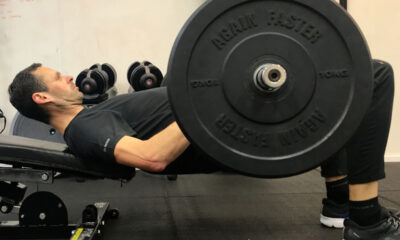
You may assume that 400m repeats, 400s or ‘quarters’ as they are known in the US, are only for runners of the shorter distances, but that’s just not true, and whether you are a 5k or marathon runner the workouts can be tailored to your goals.
Your local track is 400m in length so doing one lap is an easy distance to utilise in training. What you need to understand whether a runner or coach is that this particular repetition distance can be used in multiple different ways and achieve multiple different stimuli.
Many experienced runners will have the standard 400m repeats integrated into their training programmes and in this article, I will outline different variations that can be undertaken using this popular distance.
Please note all workouts below are samples and should always be tailored to the individual depending on their target race distance, physiological profile, training and injury history.
Samples workouts
800m pace: 4x400m with 5-6 mins walk recovery OR 2 sets of (2x400m) with 90 secs walk recovery between reps and 10 mins walk between sets.
1500m pace: 6-10x400m with 90 secs-2 mins walk/jog recovery OR 2-3 sets of 3x400m with 75 secs walk/jog recovery between reps and 3 mins walk/jog recovery between sets.
3000m pace: 8-12x400m with 75-90 secs walk/jog recovery OR 2-3 sets of (4x400m) with 45-60 secs jog recovery between reps and 3 mins jog recovery between sets.
5000m pace: 12-16x400m with 60 secs jog recovery between reps OR 3-5 sets of (4x400m) with 45 secs jog recovery between reps and 3 mins jog between sets.
10,000m pace: 20-25x400m with 45 secs jog recovery OR 2 sets of (10-14x400m) with 30-45 secs jog recovery between reps and 3 mins jog between sets
Half marathon pace: 30-35x400m with 30 secs jog recovery between reps OR 2 sets of (15-20x400m) with 15-30 secs jog recovery between reps and 2-3 mins jog between sets.
In the examples above you can see 400m intervals can be used with a variety of different paces from 800m pace all the way to half marathon pace.
What essentially changes along with pace is the volume of the workout and the recovery between reps and sets. By doing this you change the stimulus achieved from the given workout and this holds true for using any distances 400m/600m/800m/1000m/1200m/1600m/2000m etc.
Think about what you are trying to achieve from the workout, what stimulus you are looking for and then look at three main areas; pace, volume and recovery.
With regards to the recovery think about whether you would like this to be walking, shuffle jogging or a float jog recovery where we keep the recovery part steady.
Different ends of the scale

When we talk about achieving a certain stimulus lets look at two examples on the opposite end of the pace scale.
The 4x400m workout at 800m pace produces very high lactate levels and heart rates near max levels. It is very physically and mentally demanding and it produces an anaerobic stimulus.
The 400m workouts at half marathon pace, however, produce far lower lactate levels, heart rate is lower, but it helps improve lactate shuttling and it is a total aerobic stimulus.
Also, consider that 400m reps can be used in many other ways other than just as a stand-alone workout. They can be tagged on to the end of a workout or used within workouts.
There is no one way to use them and mixing them with other paces works quite well.
Example workouts for experienced runners
Tempo run and 400s: 10 min tempo effort, 4x400m @ 10km pace, 4 min tempo effort, 4x400m @ 10km pace, 10 min tempo effort
Uphill tempo and 400s: 5 min steady state uphill effort, 4x400m @ 5km-10km pace, 5 min steady state effort uphill, 4x400m @ 5km-10km pace
Power hills and 400s: 4-6x400m @ 10km pace, 4×10 secs short power hills, 4-6x400m @ 10km pace, 4×10 secs short power hills, 4-6x400m @ 10km pace
400s at descending paces: 4-5x400m @ HM Pace, 4-5x400m @ 10km pace, 4-5x400m @ 5km pace, 4-5x400m @ 3km pace
Continuous tempo and 400s: 20-30 minute continuous Tempo followed by 4x400m on a track descending paces from 10km down to 3km pace
Mile reps and 400s: 1 Mile @ 10km pace, 4x400m @ 5km pace x 2-4 sets
The examples above are just a way of showing how you can incorporate the use of 400m intervals in a mixture of different workouts. The key message here is they are flexible and can be altered to suit your training distance and goals.
Runners and coaches just need to experiment, use their imagination and keep changing up their workout designs to find exactly what works for your desired targets.
A key message again to reinforce is that what you do with the volume of the workout, the pace of the rep and the recovery between reps/sets dictates the overall load and stimulus achieved.
It’s about trial and error sometimes, have fun with the design of your workouts and don’t be afraid to try something new.













